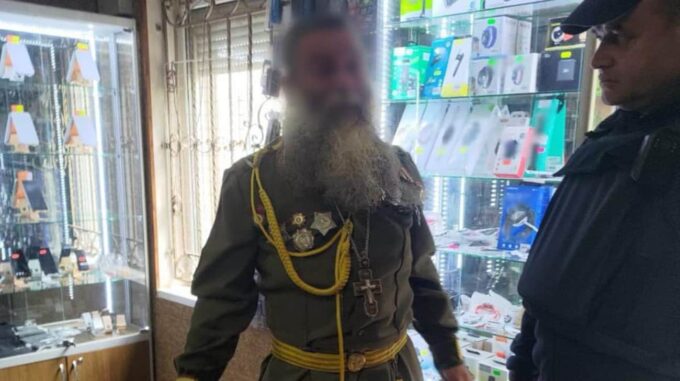In the Zakarpattia region, law enforcement officers documented another incident of blatant violation of legislation banning the propaganda of communist and Nazi regimes

Specifically, in the town of Mizhhirya, police detained two men who were dressed in full Soviet army uniforms, complemented with St. George's ribbons, as well as displaying symbols prohibited by Ukrainian law, thereby violating the norms of the law against communist and Nazi propaganda. The incident became known on May 9, when police received a report about suspicious behavior from two individuals moving through the center of Mizhhirya dressed in Soviet-era uniforms. Swiftly responding, officers detained the two men at the scene. Preliminary information indicates that their identities are known: one of the detainees is a 58-year-old clergyman of the Ukrainian Orthodox Church (Moscow Patriarchate) from Mizhhirya, and the other is a 46-year-old resident of Ternove village in Tiachiv district. Both men did not conceal their intentions — they demonstratively wore Soviet military uniforms with characteristic attributes of prohibited symbols, including St. George's ribbons, which are associated with glorification of the totalitarian regime. According to law enforcement sources, the detained individuals actively demonstrated their "honors" and promoted ideas that conflict with current Ukrainian legislation prohibiting communist symbols. All confiscated items, including uniforms and banned symbols, were sent for expert examination. The men were taken to the local police station, where they received subpoenas and the investigation was initiated. In connection with this incident, authorities opened a criminal case. Under Article 436-1 of the Criminal Code of Ukraine — "Manufacturing, distribution, or display of communist or Nazi symbols and propaganda of communist or Nazi totalitarian regimes" — liability is provided. Ukrainian legislation has long banned any manifestations of propaganda and symbols associated with totalitarian regimes, and this case once again underscores the importance of adhering to these norms. Currently, investigative activities are ongoing; police are establishing the motives and objectives of these demonstrations, as well as determining possible links of the detainees with the dissemination of banned symbols. Many activists and human rights advocates emphasize that such actions are not merely an expression of historical memory but a blatant violation of modern laws and a means of propaganda for ideologies that lack legitimacy in Ukrainian society. This incident once again demonstrates that the fight against propaganda of totalitarian regimes remains a relevant task for Ukrainian law enforcement agencies and society as a whole. Removing any manifestations of prohibited symbols is an important step toward strengthening democratic values, remembering victims of totalitarian regimes, and preventing the recurrence of tragic historical pages.

